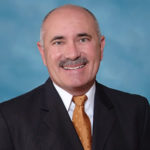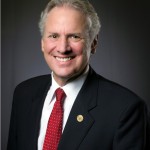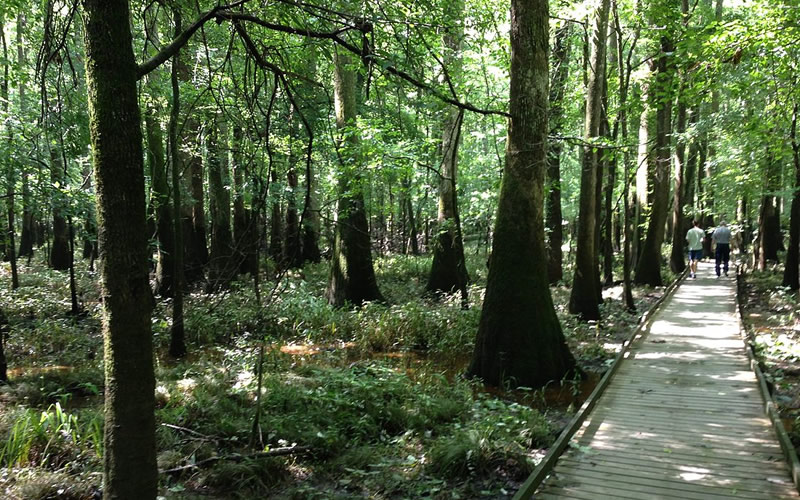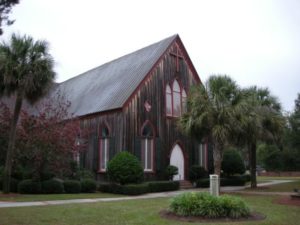NEWS; Graduates in 34 school districts now can get free tech school tuition
NEWS BRIEF: Raging against the (voting) machine
CALENDAR: Gubernatorial vetoes target 42 lines of state budget
COMMENTARY, Brack: Teach your children to swim
SPOTLIGHT: Conservation Voters of South Carolina
MY TURN, Warner: No one wins with cuts to family planning
FEEDBACK: Stop advocating offshore drilling
MYSTERY PHOTO: Imagine the bugs here at this time of the year
S.C. ENCYCLOPEDIA: Edisto River
NEWS
NEWS: Graduates in 34 school districts now can get free tech school tuition

By Lindsay Street, Statehouse correspondent | High school graduates of some of the state’s poorest school districts now can acquire a technical certificate or two-year associate degree for free thanks to a provision in the state’s new budget.
The expanded S.C. Promise Scholarship pilot program offers tuition assistance and book purchases up to $2,000 at any of the state’s technical colleges, after a student has already obtained any other scholarships available. This expanded scholarship aid is available to any students who have graduated in the last six years from one of 34 mostly rural, poor school districts in South Carolina.
“It’s a good start particularly for those students who may not otherwise have an opportunity to go to a technical college,” said S.C. Rep. Terry Alexander, D-Florence. Florence County, has five school districts where graduates will benefit from the program. “I think it gives those communities some level of hope and possibilities that otherwise would not have been there.”
Lawmakers tucked the expanded program into the state’s lottery spending inside the state appropriation bill, paying for the $3.9 million expense via surplus funds.
A growing trend
There are 16 states that offer a promise scholarship program. Those states include Tennessee, New York, Montana and Oregon.
Tennessee’s program is often cited as a lead example for many other states since it was one of the first. The Republican-majority state rolled out the program in an effort to make 55 percent of its workforce have higher education. Tennessee is using an endowment from its lottery to pay for it, according to American Association of State Colleges and Universities Director of State Relations and Policy Analysis Tom Harnisch.
“Promise scholarships are growing throughout the country,” Harnisch told Statehouse Report. “The interest from lawmakers is rooted in the problems of college affordability and concerns over student debt … (And) lawmakers are very interested in promise programs because of the need to transform the state into a knowledge based workforce. In the future, a larger share of jobs are going to require some form of a post-high school education.”
In South Carolina, there are several local promise programs. For example, at Central Carolina Technical College in Sumter, four counties have funded the first two years of school for high school graduates since 2014.
Tim Hardee headed the school as the program was first implemented. Now, he’s heads the state’s 16 technical schools at the S.C. Technical College System.
Promise program advocate Martha Kanter of the Washington-based College Promise Campaign has touted the success of such programs.
“These successes of the growing College Promise movement lead the way for other communities to build a college-going culture and keep college affordable,” said Kanter in a February press release. She is the executive director of the College Promise Campaign and former U.S. undersecretary of education in the Obama administration. “Communities and states are leading the way to create opportunity for their citizens and to build the educated workforce that employers need.”

Last year, the state implemented its first pilot promise program in Williamsburg County. Hardee said Williamsburg Technical College, which previously received 15 percent of the county’s high school graduates, received 30 percent of the county’s high school graduates under the program.
“What we were able to go back to the legislature with was that the pilot program was very successful,” Hardee said.
After the pilot proved successful, the question became how to expand the program beyond Williamsburg County. An estimate earlier this year pegged statewide implementation of the program at $76 million. A statewide rollout was ruled out due to the price tag, Alexander said.
Other ideas floated were expanding the program to a single region or perhaps to the state’s poorest school districts. But eventually, lawmakers landed on expanding the program to the 34 school districts that sued the state more than 20 years ago over inadequate and unequal K-12 education funding.
Known as the Abbeville plaintiffs, those school districts lean rural and tend to lag behind the state in economic development activity. The idea behind offering the expanded pilot program to those districts is to help students attain a higher education and help the region attract more industry, Hardee said.
“A lot of those areas have not a lot of accessibility to higher education, and economic development is tough because they don’t have an educated workforce,” Hardee said.
Message or money

Almost $4 million in new scholarship money will go a long way because it is need-based and will reach more students who are struggling financially, Hardee said.
While much of the nation has only a quarter of its scholarships as merit-based, South Carolina spends only 22 percent of its scholarships money — or about $65 million — on needs-based scholarships.
“South Carolina has invested heavily in merit-based scholarships and not as much in need-based scholarships and this is more need-based,” Hardee said.
But Harnisch said promise programs often don’t help poor students very much, especially programs like Tennessee’s and South Carolina’s where it only covers tuition and books, and not living expenses. Harnisch also said many of the state’s poorest students already can get drastically reduced tuition — if not free tuition — through federal and state scholarships.
“In some cases, low-income students will not see any new benefits,” Harnisch said. “It’s regressive in some ways.”
But, he said, the message of free higher education is powerful.
“Some students may feel like college isn’t for them because they didn’t come from a wealthy family but when they hear the words ‘free tuition’ that can start a conversation and lead them to pursue a higher education,” Harnisch said. “The money might be considered regressive but the message is very powerful.”
Additionally, the program itself likely won’t help alleviate educational disparities for children in those school districts, according to an attorney who represented the Abbeville plaintiffs.
“It’s heartening, maybe, that they are trying to help children in those areas, but I wish they would pay as much attention to the 3K-through-12 school system that they are not fixing,” said Columbia attorney Laura Callaway Hart. “Unless they do, they’re not going to have children who are equipped to go to technical schools … They’re not tackling that problem head on; they’re still playing with it around the edges.”
Alexander agreed, though he said the program is worth pursuing.
“We’ll never get there — wherever there is — without 100 percent graduation or schools fully funded,” he said.
Hardee called the expanded program a “good first step.”
“(Legislators are) trying this on a small scale and seeing how successful it is in encouraging people to enroll,” he said. “They will look at the numbers and see if it generated more people getting trained and enrolling and I think, at that point, they may consider if it’s something worthy of expanding.”
Alexander also said lawmakers are keen on seeing how this expanded pilot works before looking at a statewide implementation.
- Click here to see eligibility requirements and a list of school districts where graduates are eligible for the expanded Promise Scholarship.
- Have a comment? Send to: feedback@statehousereport.com
NEWS BRIEFS
NEWS BRIEF: Raging against the (voting) machine
By Lindsay Street, Statehouse correspondent | A former lawmaker and a businessman have filed suit against the state claiming its election voting machines are vulnerable to mistakes and hacking.
 A 45-page lawsuit was filed this week in U.S. District Court in Columbia by former S.C. Sen. Phil Leventis, D-Sumter, and Mount Pleasant businessman Frank Heindel. Heindel has been fighting the state’s voting machines since at least 2010.
A 45-page lawsuit was filed this week in U.S. District Court in Columbia by former S.C. Sen. Phil Leventis, D-Sumter, and Mount Pleasant businessman Frank Heindel. Heindel has been fighting the state’s voting machines since at least 2010.
Leventis and Heindel say there are serious security issues, making votes vulnerable and undermining democracy in the state. Did you get a quote from Leventis
The state’s election commission has sought to update their systems but lawmakers have not funded the enterprise. South Carolina is one of five states that has no paper trail for its election systems. Officials say $20 million is needed to replace the state’s voting system to provide a paper trail of the vote, according to Axios.
U.S. Sen. Lindsey Graham, R-S.C., is a co-sponsor on federal legislation to help states like South Carolina fix their election voting systems. His counterpart, U.S. Sen. Tim Scott, R-S.C., said this week that the Secure Elections Act would be a “positive first step” in helping fix voting machines in South Carolina.
AHEAD: Gubernatorial vetoes target 42 lines of state budget
By Lindsay Street, Statehouse correspondent | State lawmakers will return to Columbia in September to consider 42 line-item budget vetoes issued last week by Gov. Henry McMaster.
![]() While a veto of state funds for reimbursing Planned Parenthood for non-abortion health services for Medicaid beneficiaries made most of the headlines, the governor’s vetoes as a whole targeted $35.8 million in state spending and several provisos. (Full list and explanation here.)
While a veto of state funds for reimbursing Planned Parenthood for non-abortion health services for Medicaid beneficiaries made most of the headlines, the governor’s vetoes as a whole targeted $35.8 million in state spending and several provisos. (Full list and explanation here.)
McMaster vetoed the following provisions because they have already been “codified or otherwise addressed by the legislature”:
- Proviso 32.7: Licensing requirements for disability examiners at Department of Vocational Rehabilitation;
- Proviso 53.1: Conservation Bank trust fund suspension;
- Proviso 81.13: Revocation of enforcing regulations on go-karts at amusement parks at Department of Labor, Licensing and Regulation;
- Proviso 102.6: 911 Advisory Committee at Revenue and Fiscal Affairs Office;
- Proviso 108.13: Non-revocation of beneficiary designations at Public Employee Benefit Authority;
- Proviso 108.14: Removal of notarization requirement for retirement systems at Public Employee Benefit Authority;
- Proviso 108.15: Suspension of fiduciary audit at Public Employee Benefit Authority;
- Proviso 109.10: Tax credit for exceptional needs children at Department of Revenue (More information on the codification of this tax credit here.);
- Proviso 117.117: First Steps reauthorization (It was ratified in April.);
- Proviso 117.125: Pittman-Robertson funds state match of $2 million; and
- Proviso 117.126: North American Wetlands Conservation Act state match of $1 million.

McMaster vetoed the following provisions and labeled them as earmarks and pork:
- $100,000 in part of the Education Improvement Act to Quaver Music, a music contract for K-8;
- $250,000 in nonrecurring revenue to the Charleston Library Society’s Beaux Arts building;
- $500,000 in nonrecurring revenue to the S.C. Children’s Theatre;
- $700,000 for Strengthening Families Program as part of Department of Social Services;
- $500,000 for matching FEMA funds for Hurricane Irma and 2014 ice storm; and
- $30,000 for Department of Administration Head Start Program to match a grant to purchase a 36-passenger bus.
He called the following earmarks “zombie earmarks that simply will not die:”
- Department of Health and Environmental Control projects: Greenwood sewer extension ($990,000) line and Alida Street project ($100,000); and
- Department of Parks, Recreation and Tourism’s Horry County Museum ($250,000).
McMaster cited “transparency in budgeting” for these items:
- $170,000 for Child Advocacy Centers with the Department of Juvenile Justice;
- $200,000 and $500,000 for historic buildings preservation with the Department of Archives & History;
- $210,000 for statewide agribusiness infrastructure with the Department of Agriculture;
- $1,300,000 for economic development hubs and community development infrastructure with the Department of Commerce; and
- $4,500,000 for sports marketing grant program through the Department of Parks, Recreation & Tourism.
He labeled “responsible use of taxpayer dollars” for these vetoes:
- $4 million for Locate SC with Department of Commerce;
- Lee County bus shop;
- $70,000 for a new full-time attorney at the Conservation Bank;
- $65,000 for a new program manager at the Conservation Bank;
- $85,335 for administrative costs at the Conservation Bank; and
- $300,000 for clearing Murrells Inlet Channel through Department of Parks, Recreation and Tourism.
Here are the vetoes under higher education:
- $5 million for Francis Marion University’s medical and health education classroom complex, and $2.1 million for its honors college; and
- Proviso 117.8(n): state public institutions must give revenues and income to State Treasurer.
McMaster put the following vetoes under the heading “good government:”
- Proviso 38.30: Foster care child placements with Department of Social Services;
- Proviso 65.29: a Cannabinoids pilot program within the Department of Corrections;
- Proviso 117.156: Statewide data warehouse for workforce development;
- Proviso 1A.87: Putting $418,000 originally slated for John de la Howe School to McCormick schools;
- Proviso 93.24: Emerging Leaders Program; and
- Proviso 34.56: Hazardous Waste Fund County Account through Department of Health and Environmental Control
And finally:
- $15,779,259 set aside for medical assistance payments for Medicaid family planning that goes to abortion providers like Planned Parenthood
BRACK: Teach your children to swim

By Andy Brack, editor and publisher | While the world marveled at the miraculous rescue of 12 Thai boys and their coach, the drowning deaths of three South Carolinians years ago haunted my thoughts.
 In June 1989, three girls and a boy played in the Edisto River in Charleston County about four miles upstream of U.S. Highway 17. It was hot. Suddenly, three girls, all cousins, got pulled into a swift undercurrent where the 3-foot-deep water sharply dropped. One of the girls’ father jumped in to try to save them. Two other men pulled an 11-year-old girl from the river. The 13-year-old boy got out on his own.
In June 1989, three girls and a boy played in the Edisto River in Charleston County about four miles upstream of U.S. Highway 17. It was hot. Suddenly, three girls, all cousins, got pulled into a swift undercurrent where the 3-foot-deep water sharply dropped. One of the girls’ father jumped in to try to save them. Two other men pulled an 11-year-old girl from the river. The 13-year-old boy got out on his own.
But the father went down trying to rescue his 15-year-old daughter and 12-year-old niece, as related in a story in The Post and Courier:
“When [the father’s] body was found on the river bottom about 5 p.m., [his niece’s] arms were around his neck. [His daughter] was holding his arm, the deputy coroner said. ‘He made a heroic effort, but unfortunately, he wasn’t successful.’’”
Three members of a family – gone in an instant because they couldn’t swim out of a tough undercurrent. It is one of the saddest stories I’ve ever written. I think about it just about every time I cross the Edisto River.
In America, about 10 people die in unintentional, non-boating-related drownings every day, according to the Centers for Disease Control and Prevention.
The sad fact is that lots of kids – and adults – don’t know how to swim. With as much water as we have in South Carolina at beaches and lakes and in rivers and pools, it’s vital to have local efforts that push safety to prevent drowning deaths. Not only can there be swimming lessons, but they can boost safety by offering “drownproofing” water safety programs that teach people how to float, not sink, in the water.
Colleton County, which currently has no public pools, is taking steps to offer a place for drownproofing classes.
Help is on the way thanks to the inspirational story of Anthony Rhone, a self-described former Walterboro drug dealer who says he’s trying to rebuild part of the community he helped destroy in the 1980s.

More than a year ago, Rhone created a nonprofit organization, Village Investment Project, to promote water safety. At first, he wanted to buy a portable pool to cart around the county to provide drownproofing training. But with government regulations and whatnot, he started lobbying the county’s Parks and Recreation Department to furnish the pool.
“He is extremely outgoing and extremely persistent,” observed Chris Myers, the county’s parks director.
Rhone explains he got involved in the pool project because he sees it as a way he can make a real difference.
“I see these kids as me,” he said. “I wish I had had somebody there for me to do some of these things for me when I was a child.”
Back in 1976 when he was 5 , Rhone almost drowned in a pool at a Walterboro hotel where some family members were staying. Kids splashed and rollicked. Rhone remembers slipping into the shallow end to join them and edging toward the deep end. But he let go of the side, almost instantly sinking like a rock.
“All of a sudden, I heard this splash and felt these arms grab me,” Rhone recalled. “Mom’s boyfriend had heard the kids in the pool. He found me at the bottom of the pool and gave me CPR and brought me back.”
Rhone, now a certified swimming instructor, said it’s important for black children to learn to swim.
“As an African-American male, I know most black people — old and young — can’t swim. It was never taught to their ancestors. They feared the water but also had a reverence for it. We were never taught to use it or play in it … and it’s a joke to us. We’re only laughing because it’s so damned serious, but it’s sad.”
By next year, Colleton County expects to have a portable pool that can be used for drownproofing lessons, perhaps in coordination with the local school system, Myers said.
That’s what needs to happen all over. We don’t need more kids to drown when it’s not tough to teach them how to be safe in the water.
- Have a comment? Send to: feedback@statehousereport.com.
SPOTLIGHT
SPOTLIGHT: Conservation Voters of South Carolina
 The Conservation Voters of South Carolina is a statewide nonprofit organization that fights for the Palmetto State’s air, water, land and energy through political action. The organization is bipartisan, pragmatic and effective.
The Conservation Voters of South Carolina is a statewide nonprofit organization that fights for the Palmetto State’s air, water, land and energy through political action. The organization is bipartisan, pragmatic and effective.
Through scorecards and advocacy at the Statehouse, CVSC holds South Carolina legislators accountable for their votes and actions. As a small organization that operates as a nonprofit and has a political action committee, we have a big impact. Learn more today by clicking any of the links below:
WARNER: No one wins with cuts to family planning

By Ann Warner, special to Statehouse Report | “The main thing to remember is that South Carolina is winning,” Gov. Henry McMaster declared before he announced the removal of $16 million of family planning funding from the state budget.

Absolutely no one “wins” when women lose access to critical health services – not women, not families, and not our state. Suggesting otherwise is disrespectful to all women, and to low-income women in particular.
While the veto is cloaked in a moral judgment about abortion, the governor is well aware that these state dollars do not go toward abortion services.
First, these state dollars do not go toward abortion services. Family planning dollars support a wide range of services like annual exams, birth control, testing and treatment for sexually transmitted infections, and lifesaving cancer screenings that help low-income people to manage their health and plan their families. These services are provided in a range of facilities.
Second of all, cutting off access to preventive health and contraceptive services will actually increase the number of abortions. About half of all pregnancies in South Carolina are unintended. If we want to reduce abortions in our state, we should increase access to family planning and contraceptive services, not remove funding entirely.
Increasing contraceptive access benefits everyone. When women have contraceptive access, they are healthier and they are able to pursue their educational and economic goals. When they are able to control the timing of pregnancies, they are more likely to have healthier pregnancies and more stable families. While unintended pregnancies actually cost our state, contraceptive access improves women’s access to the workforce and helps drive economic activity for the state.
Why would we be cutting off life-saving, health-promoting, and ultimately, cost-saving programs in our state, which consistently ranks at the bottom of the national heap on measures of health and economic well-being? Our resources are far better invested in supporting women to have full control over if, when, and under what circumstances they wish to parent.
While the governor’s vetoes went into effect immediately, the South Carolina General Assembly plans to return to vote on budget overrides in September. In order to successfully override this veto and restore family planning funding, both chambers must have two-thirds of each body’s support. Members of the House and Senate need to hear from their constituents. Hundreds of South Carolinians have already contacted their legislators and demanded lawmakers override this short-sighted, vindictive, and injurious budget cut. You can join the movement by clicking here.
The longer we wait, the longer women in our state will go without well-woman exams, cancer screenings and prescription refills. This is a health crisis in the making. You can influence your elected officials to take action immediately.
South Carolina will only be “winning” when we can ensure that all people have the information and services that they need to lead healthy lives and to live up to their full potential. Demand that your elected officials override this veto and contact your legislators today.
Ann Warner is CEO of WREN, the Women’s Rights & Empowerment Network based in Columbia.
- Have a comment? Send it to: feedback@statehousereport.com.
FEEDBACK
FEEDBACK: Stop advocating offshore drilling
To the editor:
![]() Jim DeMint is correct to cite South Carolina’s “breathtaking natural beauty.” Our unspoiled Atlantic coast attracted $16 billion in tourism spending last year.
Jim DeMint is correct to cite South Carolina’s “breathtaking natural beauty.” Our unspoiled Atlantic coast attracted $16 billion in tourism spending last year.
So, why do DeMint and his Palmetto Promise Institute continue to advocate for offshore drilling?
— Tom Stickler, Pawleys Island, S.C.
Send us your thoughts. We love hearing from our readers and encourage you to share your opinions. But you’ve got to provide us with contact information so we can verify your letters. Letters to the editor are published weekly. We reserve the right to edit for length and clarity. Comments are limited to 250 words or less. Please include your name and contact information.
- Send your letters or comments to: feedback@statehousereport.com
MYSTERY PHOTO
MYSTERY PHOTO: Imagine the bugs here at this time of year

This week’s mystery may be one of the toughest ever. It shows a picturesque outdoor scene in South Carolina, but what and where in South Carolina is it? (We can think of a couple of places it could be, but which do you think it is?) Send your best guess – plus your name and the town you live in now – to feedback@statehousereport.com. In the subject line, write: “Mystery Photo guess.” (If you don’t include your contact information, we can’t give you credit!)
Our previous Mystery Photo
 Our July 5 mystery showed a church that looked similar to a Barnwell church we showed a few months back. This one, however, was the Church of the Cross in Bluffton.
Our July 5 mystery showed a church that looked similar to a Barnwell church we showed a few months back. This one, however, was the Church of the Cross in Bluffton.
Congratulations to a baker’s dozen of photo sleuths for the week: Callie Walpole of Charleston; George Graf of Palmyra, Va.; Charles E. Davis and Will Williams, both of Aiken; Ashley Feaster and Tray Hunter, both of Bluffton; Wayne Beam of North Myrtle Beach; Donald B. Clark and Bill Segars, both of Hartsville; Barry Wingard of Florence; Will Breazeale of Las Vegas, Nevada; Philip Cromer of Beaufort; and Dale Rhodes of Richmond, Va.
Graf provided more context: “According to churchofthecross.net, in the early 1830s. the young town of Bluffton was a summer resort for area and inland planters and a stop on the ferry route between Savannah and Beaufort. In July of 1854, construction of the present building began. Architect E. B. White designed a structure described then as a “handsome cruciform Gothic building”, which indeed it remains today.
“It’s easy to imagine the summer congregation of island planters beginning June Sundays with worship. You can almost feel the cool morning air wafting through open windows as the harmonies of hymns float out.
In 1863, Federal troops marched into Bluffton burning most of the town. Although the church was spared, its congregation fled. Services on The Bluff resumed in 1870, when the Rev. E. E. Bellinger arrived and oversaw repairs. The National Register of Historic Places has listed The Church of the Cross since 1975 and it is part of the Diocese of South Carolina and the Anglican Church in North America.”
Send us a mystery: If you have a photo that you believe will stump readers, send it along (but make sure to tell us what it is because it may stump us too!) Send to: feedback@statehousereport.com and mark it as a photo submission. Thanks.
S.C. ENCYCLOPEDIA
HISTORY: Edisto River

S.C. Encyclopedia | Rising in the coastal plain, the Edisto is one of the longest free-flowing black-water rivers in North America. The river takes its characteristic hue from the tannic acid created by the decomposition of leaves and branches.
The Edisto River is formed by the joining of its north and south forks on the border of Orangeburg and Bamberg Counties and, along its course, provides the natural boundary between Dorchester and Colleton Counties. It divides into two tidewater estuarial channels, forming Edisto Island, before meeting the Atlantic Ocean in St. Helena Sound. The river flows for about 250 unobstructed river miles from its headwaters to the ocean. The Edisto is part of the ACE Basin, a coastal river system that includes the Ashepoo and the Combahee and drains about twenty percent of the state.
Pottery recovered near the Edisto suggests that Native Americans lived by the river over three thousand years ago. When Europeans and Africans first entered the area, they found that it was home to the Kussos, a Native American tribe. The Kussos were joined by a splinter group of Natchez Indians in the early 1700s, and the two formed a single tribe that would eventually take the name Edisto after the river that flowed through their territory. Descendants of both the Kusso-Natchez Indians and African slaves still call the area of the Edisto River Basin their home.
By the late eighteenth century, rice plantations in tidally affected reaches of the Edisto began implementing tidewater rice culture. Thousands of slaves labored to clear fields and build dams, sluices, and gates. The lengthy Edisto was also used to transport upland cotton and timber to the coast in the antebellum years before the railroads superseded rivers as avenues of commerce.
The Edisto River flows through sparsely populated and generally undeveloped forest and cypress-tupelo swamps, and has been nationally recognized for its scenic beauty and ecological value. The unique character of the river has been preserved through ongoing conservation efforts.
— Excerpted from an entry by Robert Stevens. To read more about this or 2,000 other entries about South Carolina, check out The South Carolina Encyclopedia, published in 2006 by USC Press. (Information used by permission.)
ABOUT STATEHOUSE REPORT
Statehouse Report, founded in 2001 as a weekly legislative forecast that informs readers about what is going to happen in South Carolina politics and policy, is provided to you at no charge every Friday.
- Editor and publisher: Andy Brack, 843.670.3996
- Statehouse correspondent: Lindsay Street
More
- Mailing address: Send inquiries by mail to: P.O. Box 22261, Charleston, SC 29407
- Subscriptions are free: Click to subscribe.
- We hope you’ll keep receiving the great news and information from Statehouse Report, but if you need to unsubscribe, go to the bottom of the weekly email issue and follow the instructions.
© 2018, Statehouse Report. All rights reserved.















 We Can Do Better, South Carolina!
We Can Do Better, South Carolina!